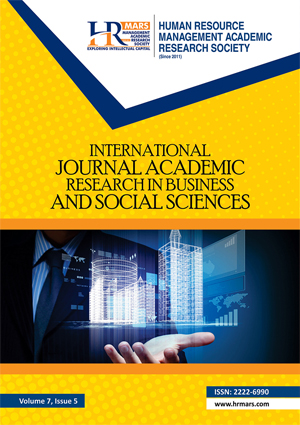Adams, D., & Paul, L. (2017). State of the smart Consumer business usage patterns. Global Mobile consumer survey. Deloitte: London.
Alamassi, S. M. S., Al Jneibi, F. S., Al Kaabi, F., Dela Cruz Recio, C. H., El Zaatari, W., & Panitsides, E. A. (2015). What Hinders Educational Change? School Principals’ Perspectives in the UAE Context. Multilingual Academic Journal of Education and Social Sciences, 3(1), 43–59.
Australian Psychological Society, The. (2004). Psychosocial aspects of mobile phone use among students. Retrieved on 10th July 2020 at http://www.psychology.org.au/news/psychology_week/10.10
Beranuy, M., Oberst, U., Carbonell, X., & Chamarro, A. (2009). Problematic Internet and mobile phone use and clinical symptoms in college students: The role of emotional intelligence. Computers in Human Behavior, 25(5), 1182-1187.
Bianchi, A., & Phillips, J. G. (2005). Psychological predictors of problem mobile phone use. CyberPsychology & Behavior, 8(1), 39-51.
Billieux, J., Van der Linden, M., & Rochat, L. (2008). The role of impulsivity in actual and problematic use of the mobile phone. Applied Cognitive Psychology: The Official Journal of the Society for Applied Research in Memory and Cognition, 22(9), 1195-1210.
Billieux, J. (2012). Problematic use of the mobile phone: a literature review and a pathway model. Current Psychiatry Reviews, 8(4), 299-307.
Billieuex, J., Maurage, P., Lopez-Fernandez, O., Kuss, D. J., & Griffiths, M. D. (2015). Can disordered mobile phone use be considered a behavioral addiction? An update on current evidence and a comprehensive model for future research. Current Addiction Reports, 2, 156–162.
Fadzil, M. F., Ghazali, A. H. A., Samah, A. A., & Bolong, J. (2019). A Systematic Review on Factors Influencing Mobile Phone Addiction among Youths in Asean Countries. International Journal of Academic Research in Business and Social Sciences, 9(3), 1097-1114.
Grinter, R. E., & Eldridge, M. A. (2001). Y do tngrs luv 2 txt msg?. In Proceedings of the Seventh European Conference on Computer-Supported Cooperative Work ECSCW '01 Bonn, Germany, Edited by: Prinz, W., Jarke, M., Rogers, Y., Schmidt, K. and Wulf, V. 2019 – 238. Dordrecht, Netherlands: Kluwer Academic Publishers.
Hawi, N. S., & Samaha, M. (2017). Relationships among smartphone addiction, anxiety, and family relations. Behaviour & Information Technology, 36(10), 1046–1052.
Hussain, Z., Williams, G. A., & Griffiths, M. D. (2015). An Exploratory Study of the Association between Online Gaming Addiction and Enjoyment Motivations for Playing Massively Multiplayer Online Role-playing Games. Computers in Human Behavior, 50, 221–230.
Kamibeppu, K., & Sugiura, H. (2005). Impact of the mobile phone on junior high-school students' friendships in the Tokyo metropolitan area. Cyberpsychology & Behavior, 8(2), 121-130.
Kardefelt-Winther, D. (2014). A conceptual and methodological critique of internet addiction research: Towards a model of compensatory internet use. Computers in Human Behavior, 31, 351-354.
Kardefelt-Winther, D. (2014). Problematizing excessive online gaming and its psychological predictors. Computers in Human Behavior, 31, 118-122.
Kaufmann, K., & Peil, C. (2020). The mobile instant messaging interview (MIMI): Using WhatsApp to enhance self-reporting and explore media usage in situ. Mobile Media & Communication, 8(2), 229-246.
Kim, J. H. (2018). Psychological issues and problematic use of smartphone: ADHD's moderating role in the associations among loneliness, need for social assurance, need for immediate connection, and problematic use of smartphone. Computers in Human Behavior, 80, 390–398.
Kim, E., & Koh, E. (2018). Avoidant attachment and smartphone addiction in college students: The mediating effects of anxiety and self-esteem. Computers in Human Behavior, 84, 264-271.
Kim, K., Milne, G., R., & Bahl, S. (2018). Smartphone addiction and mindfulness: an intergenerational comparison. International Journal of Pharmaceutical and Healthcare Marketing, 12(1), pp. 25-43.
Kumcagiz, H., & Gunduz, Y. (2016). Relationship between psychological well–being and smartphone addiction of university students. International Journal of Higher Education, 5(4), 144–156.
Madell, D., & Muncer, S. (2004). Back from the beach but hanging on the telephone? English adolescents' attitudes and experiences of mobile phones and the internet. CyberPsychology & Behavior, 7(3), 359-367.
Muhammud, A. (2012). Penghuni Raudhatus Sakinah: Kajian terhadap latar belakang dan faktor salahlaku (Doctoral dissertation, University of Malaya, Kuala Lumpur). Retrieved from http://studentsrepo.um.edu.my/5233/1/AZLINA_BINTI_MUHAMMUD.pdf.
Ravizza, S. M., Hambrick, D. Z., & Fenn, K. M. (2014). Non-academic internet use in the classroom is negatively related to classroom learning regardless of intellectual ability. Computers & Education, 78, 109–114.
Rogers, R. W. (1985). Attitude change and information integration in fear appeals. Psychological Reports, 56(1), 179-182.
Ryan, R., M., & Deci, E., L. (2000). The darker and brighter sides of human existence: Psychological needs as a unifying concept. Psychological Inquiry, 11(4), 319–338.
Ryan, T., & Xenos, S. (2011). Who uses Facebook? An investigation into the relationship between the big five, shyness, narcissism, loneliness, and Facebook usage. Computers in Human Behavior, 27, 1658–1664.
Sandstrom, M., Wilen, J., & Mild, K., H. (2001). Mobile phone use and subjective symptoms. Comparison of symptoms experienced by users of analogue and digital mobile phones. Occupational Medicine, 51(1), 25-35.
Settley, C. (2020). The physical and psychological wellbeing of caregivers of individuals suffering from substance addiction. Archives of Psychiatric Nursing, 34, 107-109.
Sheldon, K., M., Abad, N., & Hinsch, C. (2011). A two–process view of Facebook use and relatedness need–satisfaction: Disconnection drives use, and connection rewards it. Journal of Personality and Social Psychology, 100(4), 766–775.
Thomee, S., Harenstam, A., & Hagberg, M. (2011). Mobile phone use and stress, sleep disturbances, and symptoms of depression among young adults-a prospective cohort study. BMC Public Health, 11(66), 1-11.
Wang, Y., Zou, Z., Song, H., Xu, X., Wang, H., d’Oleire Uquillas, F., & Huang, X. (2016). Altered gray matter volume and white matter integrity in college students with mobile phone dependence. Frontiers in Psychology, 7, 597.
Wang, P., Wang, X., Nie, J., Zeng, P., Liu, K., Wang, J., Lei, L. (2019). Envy and problematic smartphone use: The mediating role of FOMO and the moderating role of student relationship. Personality & Individual Differences, 146, 136–142.
Walsh, S. P., White, K. M., Hyde, M. K., & Watson, B. (2008). Dialling and driving: Factors influencing intentions to use a mobile phone while driving. Accident Analysis and Prevention, 40, 1893–1900.
WhatsApp. (2019). About WhatsApp. Retrieved on 22 October 2020 at https://www.whatsapp.com/ about/.
